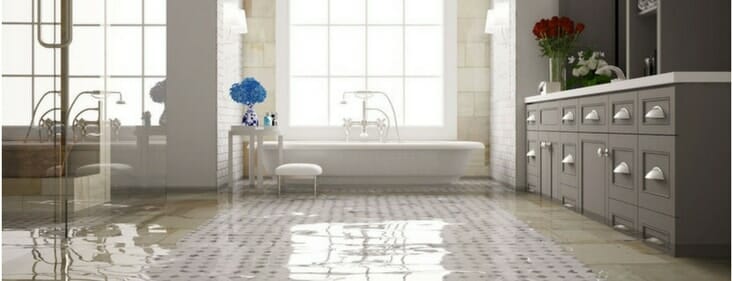Right here down the page you'll find a lot of sound ideas in relation to How to Prevent Bathroom Water Damage.

The bathroom is incredibly vulnerable for damp accumulation and also potential water damage as a result of the regular use water in it. This post offers basic inspection methods to aid discovering water damages hazards.
The constant use of water in the shower room makes it extremely susceptible for damp buildup and possible water damage. By inspecting it consistently, you can decrease water associated problems.
The following collection of inspections is simple to execute and also ought to be done as soon as in every three months in order to keep your restroom healthy and to avoid possible water damages triggered by the bath tub, the shower, pipeline joints and plumbing, sinks, cupboards, as well as the commode
Do not overlook executing these inspections as well as be complete while executing them. Remember that these simple evaluations can conserve you a lot of cash by providing early indicators for water damage
Tub and also Shower
The shower and also bath tub require special interest as well as maintenance. Check the tiles and replace if fractured. Ensure that there is no missing grout between the tiles. Examine and replace cracked caulking at joints where the wall surfaces fulfill the flooring or the tub. Blocked drains and pipes troubles will certainly protect against the bath tub from drying out as well as may suggest serious troubles under the tub. Consult with a professional immediately to stop architectural damage. Take note of discolorations or soft areas around the bath tub wall surfaces as they might indicate an internal leakage.
Plumbing
Signs for water damage are hard to detect since a lot of pipes are installed inside the walls.
Pay unique interest to floor covering as well as walls moisture as well as discolorations as they might indicate an invisible plumbing issue. Inspect dampness degrees in adjoining rooms too.
Sinks as well as Cabinets
Sinks and closets are revealed to wetness as well as humidity day-to-day and are usually ignored. Inspect consistently under the sink as well as on the countertop over it. Repair any kind of drip in the trap as it may suggest drainpipe problems. Look around the sink, slow-moving draining pipes might suggest a blocked drain. Change sink seals if they are broken or loose.
The Bathroom
The toilet is an at risk water joint. Inspect the water lines and look for leaks around the commode seat, in the hose pipe, and also under the water storage tank. If you detect any kind of indications of moisture on the flooring around the toilet, look for leaks in the toilet edge as well as tank seals.
Know that hanging toilet dish antiperspirants increases the opportunities for blockages.
Water Damage Signs In The Bathroom To Avoid Cleanup
Musty smell
This is one of the easiest signs to catch because musty smells are so odorous. The damp, earthy, moldy smell should be a big red flag. The smell will develop when moisture gets trapped in surfaces, and begins to facilitate mold growth. Leaking pipes under cabinets, inside walls, and behind shower fixtures will cause moisture to stay trapped and not dry, which will lead to mold growth and spread. As soon as you notice any musty smells in your bathroom, have it checked for hidden water damage and cleanup signs.
Visible mold
If the smell isn’t there to give it away, sometimes you will actually see mold growth. Finding mold in your bathroom is a serious problem, because mold is very harmful to your health. By the time mold growth is visible, it also means that water damage has already occurred and been present for some time. The only way the mold problem can be resolved is to find the source of the moisture and get it stopped. To safely and adequately remove mold, you need to have professionals handle the remediation. Do not waste any time in getting mold problems addressed, fixed, and sanitized so that you can protect you and your family from the many respiratory symptoms caused by mold exposure.
Damaged floors
Bathroom floors should be able to withstand some exposure to water while still remaining in good condition. However, when excess exposure or water leaks occur, they will begin to damage even the most water-resistant flooring. If you notice any cracking, bubbling, staining, or warping on your bathroom floors, there is probably a water leak somewhere causing the distortion. If you notice areas of the floor have become softer, or even have a spongy feeling, there is probably damage to the subfloor. Subflooring is typically made up of plywood. When plywood is exposed to water or moisture, it will absorb it. Once it has become saturated, the weight of the excess water will cause the wood to swell and soften. Check the floors in your bathroom frequently to catch any of these sings before they lead to damaged subflooring.
Changes on walls
When water leaks behind walls, it will cause changes in the drywall. Peeling plaster, blistering paint, and soggy wallpaper are all good indicators that excess water is building up behind the wall. Water leaking behind drywall will cause it to swell and be soft to the tough. If you start to notice gaps along the trim of your walls, or where tile meets the wall, it could also be a strong indicator that there is a leak behind the wall. Any changes, distortion, or damage on the walls should be evaluated as soon as you notice it to prevent further water damage and cleanup.

I'm very curious about How to Fix a Water Damage Bathroom and I really hope you enjoyed the entry. Sharing is nice. Helping people is fun. We value reading our article about How to Prevent Bathroom Water Damage.
Book Your Appointment